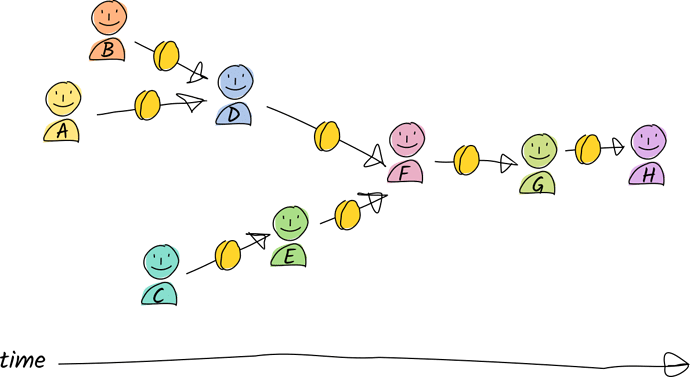Let’s first take a look at why a malicious agent might want to influence randomness. In blockchain, if you can influence a seed such that you could be selected next as a validator, you could do all sorts of nasty things to that block. But with Holochain, validators tend to not be interested in the data they receive, because it doesn’t involve their economic interests — e.g., in a currency app, their account balance isn’t involved in the same chain of transactions as the transactions they’re validating.
But in a Holochain app you as a data producer may be interested in influencing the randomness that chooses a validator for you. If you want to get bad data to pass as good data, you need to find a validator to collude with you.
Depending on the data and the size of the DHT, this might not be very hard. If you control the entire contents of the data structure, you can totally influence the validator selection. A transaction might have ‘memo’ fields, with which you can ‘mine’ the hash into a bad neighbourhood that’s under your control. There wouldn’t be much value in introducing a verifiable-delay function here, because it’s meant to slow down a group of people, not a single person.
But there are some nice statistical things that make it kinda worthless to bother with this:
- You can’t control who’s in the neighbourhood. Our next DHT design will collapse all addresses into a 32-bit space. “Wait,” you say, “that makes it even easier to mine an entry into a dishonest neighbourhood!” True, but it also makes it much more difficult to keep honest nodes out of that neighbourhood.
- Most apps that require high level of validation confidence will be transactional apps, where a number of entries are produced for each transaction (I think HoloFuel produces up to five). As mentioned in a previous forum thread (can’t find it), that exponentially increases the difficulty of engineering enough bad neighbourhoods. Both the initiator and the receiver could be in collusion with each other for this to even work, and by the end of a five-step transaction flow (like with HoloFuel), you have to be in control of five neighbourhoods, which is 2⁵ (16×) more difficult than controlling just one. And you have to do it for every bad transaction!
- If only one party is corrupt, they don’t have any influence over the data their counterparty produces in response. This means that the best they can do is create an invalid first entry, get it validated by corrupt peers, and then have the honest counterparty immediately catch the fraud.
- I don’t know the exact plans, but I believe that in the future we’ll have automatic detection and revalidation of entries that were created in a partition, so this makes it more difficult for colluding nodes to create a partition for the purpose of ensuring that all their validating peers are corrupt.

 we have a local consensus about it.
we have a local consensus about it.

 It’s like my favourite Holochain subject! As you guessed, Holochain is almost entirely strong eventual consistency. We’ve modelled as many things as possible based on the
It’s like my favourite Holochain subject! As you guessed, Holochain is almost entirely strong eventual consistency. We’ve modelled as many things as possible based on the 